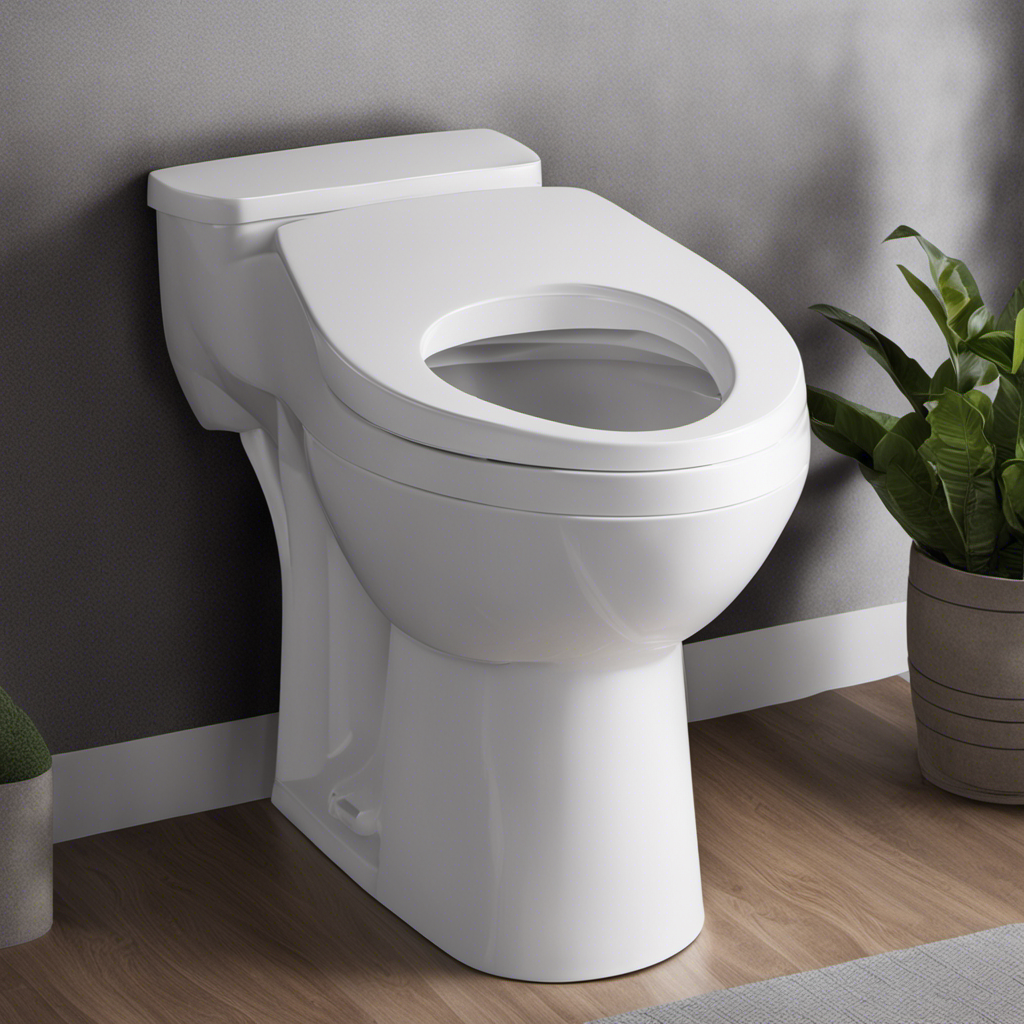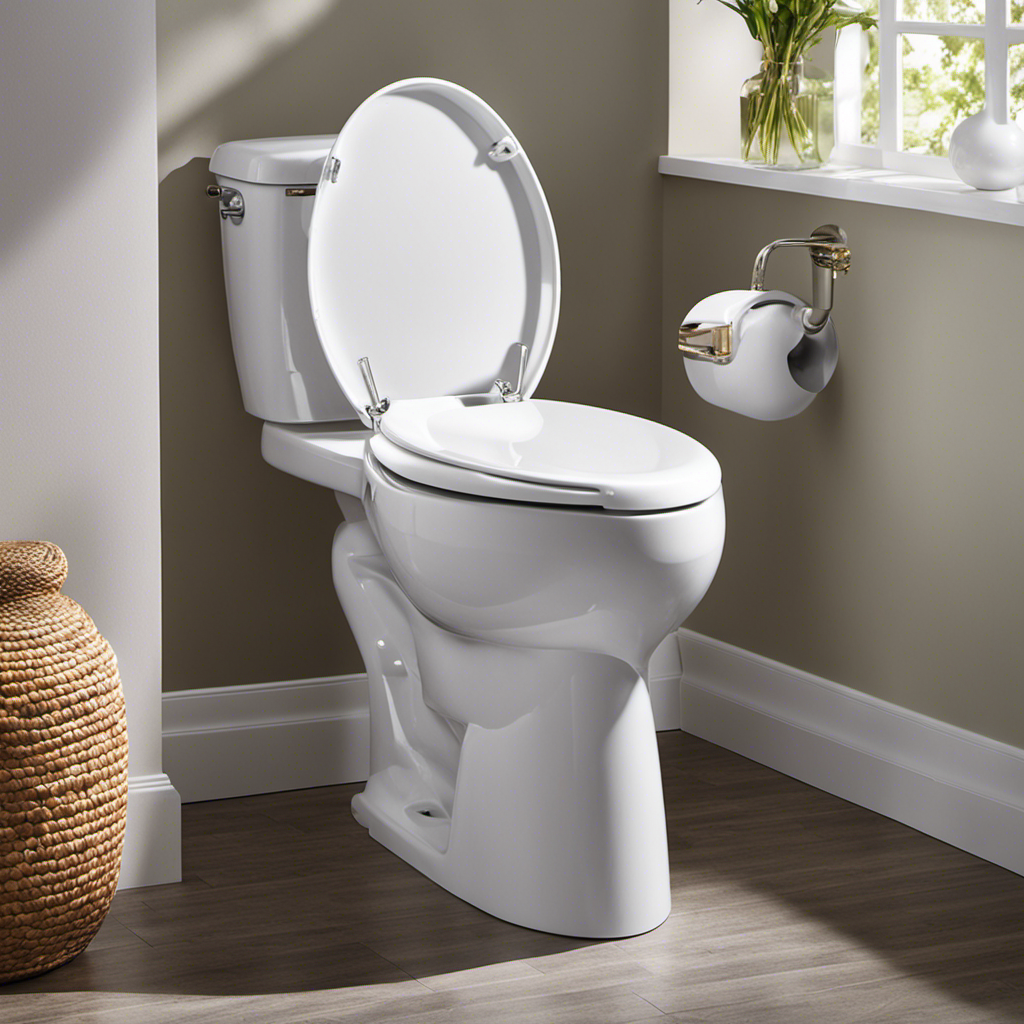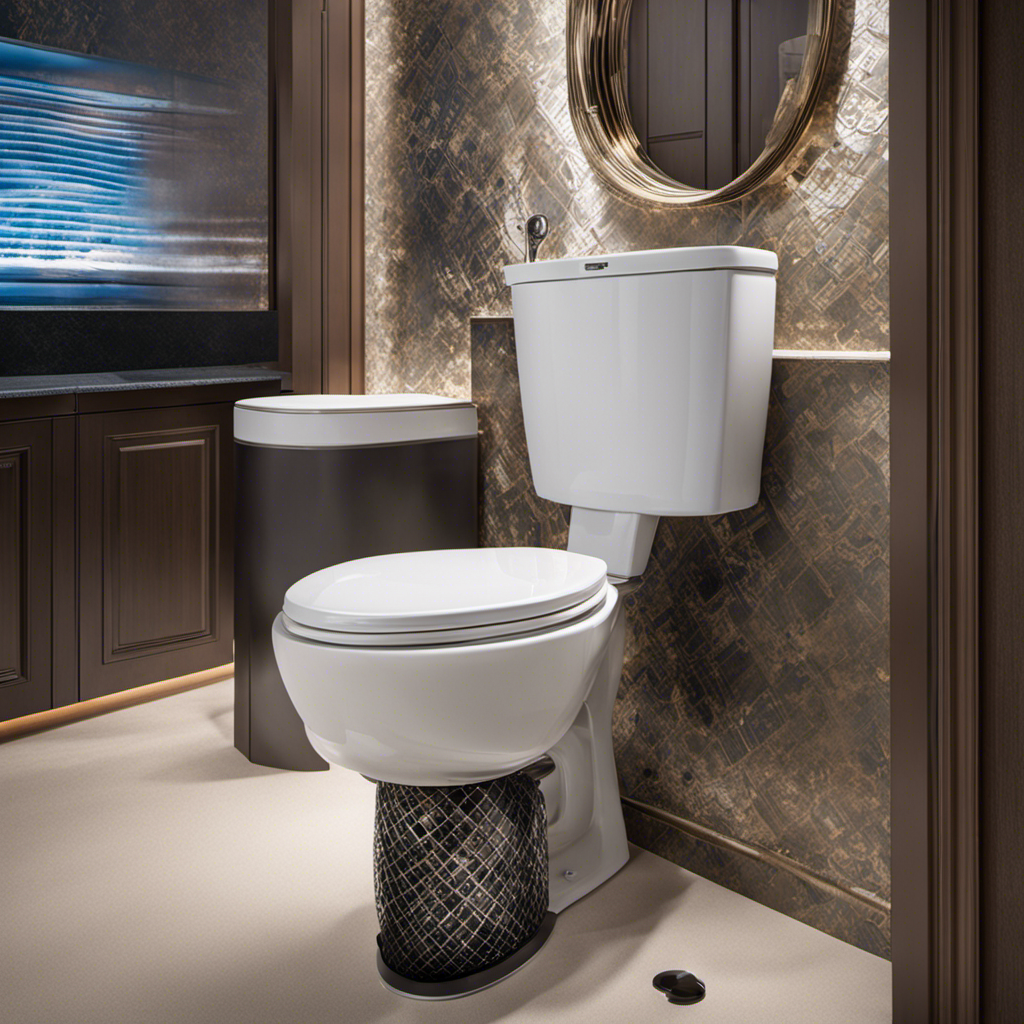As I plunge into the realm of plumbing, I am fascinated by the intricate components that make up a toilet.
One such element, the flange, plays a vital role in ensuring the proper function of this indispensable fixture.
In this article, we will delve into the purpose of a toilet flange, explore its anatomy, discuss common issues that can arise, and provide step-by-step instructions for installation and maintenance.
Let’s embark on a journey to unravel the mysteries of the flange on a toilet.
Key Takeaways
- Toilet flanges provide a secure connection between the toilet and waste pipe.
- Different types of toilet flanges are available, including PVC, cast iron, and brass.
- Proper alignment and installation of the flange are crucial to prevent leaks and maintain stability.
- Regular maintenance and inspection of the flange can prevent damage and ensure longevity.
The Purpose of a Flange on a Toilet
The purpose of a flange on a toilet is to provide a secure connection between the toilet and the waste pipe beneath it. There are different types of toilet flanges available, such as PVC, cast iron, and brass.
PVC flanges are the most common and are easy to install. Cast iron flanges are durable and suitable for heavy-duty applications. Brass flanges are corrosion-resistant and often used for high-end installations.
Troubleshooting toilet flange leaks is important to ensure proper functioning of the toilet. Common causes of leaks include loose bolts, damaged wax seals, or a cracked flange. It is crucial to fix these issues promptly to prevent water damage and unpleasant odors.
Understanding the anatomy of a toilet flange will help in identifying and resolving any problems that may arise.
Understanding the Anatomy of a Toilet Flange
Understanding the anatomy of a toilet flange can be helpful in troubleshooting common plumbing issues. The toilet flange is a circular piece made of various materials, such as PVC, cast iron, or ABS plastic. It serves as a connection point between the toilet and the drainpipe, ensuring a secure and watertight seal.
Here is a deeper understanding of the toilet flange anatomy:
-
Flange Ring: This is the main part of the flange that sits on top of the drainpipe. It has holes for securing it to the floor.
-
Closet Bolts: These bolts attach the toilet to the flange and provide stability.
-
Wax Ring: Placed between the flange and the toilet base, it creates a watertight seal to prevent leaks.
Proper alignment of the toilet flange is crucial to prevent leaks and maintain the integrity of the plumbing system.
Now, let’s explore some common issues with toilet flanges.
Common Issues With Toilet Flanges
Proper alignment of a toilet flange is crucial to prevent leaks and maintain the integrity of the plumbing system. Signs of a damaged toilet flange can include water leaks, loose toilet bowl, and foul odors. If you notice any of these issues, it may be time for a toilet flange repair. Let’s take a look at some common problems that can occur with toilet flanges:
| Issue | Description | Solution |
|---|---|---|
| Cracked Flange | A cracked flange can lead to water leaks | Replace the flange with a new one |
| Loose Flange | A loose flange can cause a wobbly toilet bowl | Tighten the bolts securing the flange to the floor |
| Corroded Flange | Corrosion can weaken the flange, leading to leaks | Replace the flange with a corrosion-resistant material |
How to Install or Replace a Toilet Flange
When installing or replacing a toilet flange, you’ll want to make sure it is properly aligned and securely fastened to the floor. A toilet flange serves as a connection point between the toilet and the waste pipe, ensuring a watertight seal and preventing leaks. There are different types of toilet flanges available, including PVC, cast iron, and stainless steel. Each type has its own benefits and suitability for specific plumbing systems.
Here are three key considerations when installing or replacing a toilet flange:
-
Ensure proper alignment: The flange should be positioned so that the toilet bolts align with the holes on the base of the toilet. This ensures a secure and stable connection.
-
Use the correct fasteners: It is important to use the appropriate screws or bolts to secure the flange to the floor. This will prevent the flange from shifting or becoming loose over time.
-
Seal the connection: Apply plumber’s putty or silicone caulk around the base of the toilet flange to create a watertight seal. This will prevent any potential leaks or odors.
By properly installing a toilet flange, you can enjoy several benefits, such as:
-
Preventing leaks: A properly installed flange ensures a tight seal, preventing water from leaking out of the toilet and onto the floor.
-
Avoiding damage: A secure flange reduces the risk of the toilet becoming unstable or wobbly, which can lead to cracks or damage to the base.
-
Maintaining hygiene: A well-installed flange helps keep the toilet securely in place, preventing any gaps or spaces where bacteria or other contaminants can accumulate.
In the next section, we will discuss some essential tips for maintaining a toilet flange and ensuring its longevity.
Tips for Maintaining a Toilet Flange
To keep your toilet flange in good condition, you should regularly check for any signs of damage or wear.
The toilet flange is a crucial component of your toilet system that connects the toilet to the floor and helps maintain a watertight seal.
Over time, the flange may develop cracks or become loose, leading to potential leaks and damage to your bathroom floor.
To prevent toilet flange leaks, it is important to inspect the flange for any signs of deterioration, such as rust or corrosion.
If you notice any issues, it is recommended to perform a toilet flange repair as soon as possible. This can involve replacing the damaged flange or using a repair kit to reinforce the existing flange.
Conclusion
In conclusion, the toilet flange is like the unsung hero of the bathroom. It quietly plays a crucial role in maintaining the integrity and functionality of our toilets. Just as a conductor leads an orchestra to create a harmonious symphony, the flange ensures a seamless connection between the toilet and the sewer line. This connection prevents leaks and ensures proper waste disposal.
By understanding its purpose, anatomy, and how to install and maintain it, we can ensure a smooth and efficient bathroom experience for years to come.










